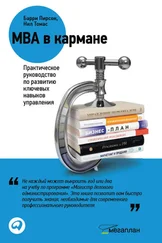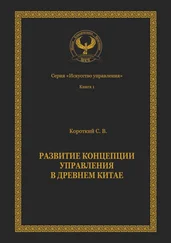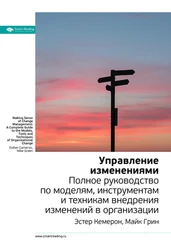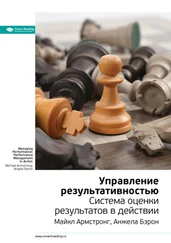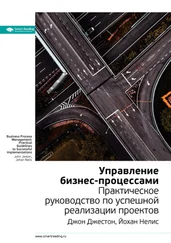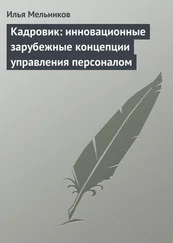1. Устойчивое развитие
1. Interpretation of ideas found in: Freeman, R. E., Harrison, J. S., Wicks, A. C., Parmar, B. L., de Colle, S. (2010) Stakeholder Theory — The State of the Art , Cambridge, Cambridge University Press.
2. Taken from: Barrett, R. (2006) Building a Values-Driven Organization: A whole system approach to cultural transformation , Oxford, Butterworth-Heinemann.
3. Interpretation of ideas found in: Anderson, R. C., White, R. (2011) Business Lessons from a Radical Industrialist , Hampshire, St. Martin’s Press.
4. Interpretation of ideas found in: Prahalad, C. K. (2004) The Fortune at the Bottom of the Pyramid: Eradicating Poverty through Profits . Philadelphia, Wharton School Publishing.
5. Interpretation of ideas found in: McDonough, W., Braungart, M. (2002) Cradle to Cradle, remaking the way we make things , New York, North Point Press, and www.c2ccertified.organd www.cradletocradle.com.
6. Taken from: Hart, S. L., Milstein, M. B. (2003) ‘Creating Sustainable Value’, Academy of Management Executive , vol. 17, No.2, pp. 56–67.
7. Interpretation of ideas found in: Trompenaars, F., Woolliams, P. (2010) ‘Re-Defining Sustainability for Long-Term Success’, Intercultural Management Quarterly , Winter 2010, vol. 11, No. 01.
2. Инновации и предпринимательство
1. Taken from: Csikszentmihalyi, M. (1990) Flow: The Psychology of Optimal Experience , New York, Harper & Row. (Чиксентмихайи М. Поток. Психология оптимального переживания. — М.: Альпина нон-фикшн, 2017.)
2. Interpretation of ideas found in: Kirton, M. J. (1976) ‘Adaptors and innovators: A description and measure’, Journal of Applied Psychology , 61, pp. 622–629, and www.kaicentre.com.
3. Taken from: Zacharakis, A., Spinelli, S., Timmons, J. A. (2011) Business Plans that Work: A Guide for Small Business , New York, McGraw-Hill.
4. Taken from: Christensen, C. M., Raynor, M. (2003) The Innovator’s Solution: Creating and Sustaining Successful Growth , Boston, Harvard Business School Press. (Кристенсен К. М., Рейнор М. Е. Решение проблемы инноваций в бизнесе. Как создать растущий бизнес и успешно поддерживать его рост. — М.: Альпина Паблишер, 2014.)
5. Interpretation of ideas found in: Schrage, M. (1999) Serious Play: How the World’s Best Companies Simulate to Innovate , Boston, Harvard Business School Press.
6. Taken from: Chesbrough, H. (2005) Open Innovation: The New Imperative for Creating and Profiting from Technology , Boston, Harvard Business School Press.
7. Interpretation of ideas found in: Govindarajan, V., Trimble, C. (2012) Reverse Innovation: Create far from home, win everywhere , Boston, Harvard Business School Press.
3. Стратегия и позиционирование
1. Taken from: Ansoff, H. I. (1957) ‘Strategies for Diversification’, Harvard Business Review , vol. 35: 5, pp. 113–124
2. Taken from: Ohmae, K. (1982) The Mind of the Strategist: The Art of Japanese Business , New York, McGraw-Hill. (Омае К. Мышление стратега: Искусство бизнеса по-японски. — М.: Альпина Бизнес Букс, 2007.)
3. Taken from: Mintzberg, H. (1994) The Rise and Fall of Strategic Planning , New York, The Free Press.
4. Taken from: Porter, M. E. (1979) How Competitive Forces Shape Strategy’, Harvard Business Review , pp. 137–145.
5. Taken from: Waterman Jr. R. H., Peters, T. J., Phillips, J. R. (1980) ‘Structure is not Organization’, Business Horizons , 23(3): pp. 14–26.
6. Interpretation of ideas found i Hamel, G., Prahalad, C. K. (1994) Competing for the Future , Boston, Harvard Business School Press. (Хамел Г., Прахалад К. К. Конкурируя за будущее. — М.: Олимп-Бизнес, 2014.)
7. Taken from: Aaker, D. A. (1991) Managing Brand Equity , New York, The Free Press.
8. Interpretation of ideas found in: Treacy, M., Wiersema F. (1995) The Discipline of Market Leaders , New York, Perseus.
9. Interpretation of ideas found in: Kim, W. C., Mauborgne, R. (2004) ‘Blue Ocean Strategy’, Harvard Business Review , January/February, pp. 71–79.
4. Разнообразие и культура
1. Taken from: Briggs Myers, I., McCaulley, M. H. (1998) A Guide to the Development and Use of the Myers-Briggs Type Indicator , Palo Alto, Consulting Psychologists Press.
2. Taken from: Handy, C. B. (1993) Understanding Organizations, Oxford , Oxford University Press.
3. Interpretation of ideas found in: Hofstede, G., Hofstede, G. J., Minkov, M. (2010) Cultures and Organizations: Software of the Mind , New York, McGraw-Hill.
4. Taken from: www.belbin.com.
5. Taken from: Cameron, K. S., Quinn, R. E. (2011) Diagnosing and Changing Organizational Culture , New York, John Wiley. (Камерон К., Куинн Р. Диагностика и изменение организационной культуры. — СПб.: Питер, 2001.)
6. Interpretation of ideas found in: Schein, E. H. (2010) Organizational Culture and Leadership , San Francisco, Jossey-Bass.(Шейн Э. Г. Организационная культура и лидерство. 4-е изд. — СПб.: Питер, 2013.)
7. Taken from: Bennett, M. J. (2013) Basic Concepts of Intercultural Communication: Paradigms, Principles, and Practices , Nicholas Brealey Publishing, 2nd ed., London.
8. Interpretation of ideas found in: Beck, D. E., Cowan, C. (1996) Spiral Dynamics: Mastering Values, Leadership and Change , Oxford, Blackwell. (Бек Д. Э., Кован К. К. Спиральная динамика. Управляя ценностями, лидерством и изменениями в XXI веке. — М.: BestBusinessBooks, Открытый Мир, 2010.)
9. Interpretation of ideas found in: Trompenaars, F., Hampden-Turner, C. (2010) Riding the Waves of Innovation: Harness the Power of Global Culture to Drive Creativity and Growth , New York, McGraw-Hill.
10. Interpretation of ideas found in: de Caluwé, L., Vermaak, H. (2004) ‘Change Paradigms: An Overview’, Organization Development Journal , 22:4, pp. 9–18.
5. Клиенты
1. Taken from: Visualization of values at www.valuesandframes.org, following Schwartz, S. H. (2006) ‘Basic Human Values: Theory, Measurement, and Applications’, Revue française de sociologie , 47 (4), 249–288.
2. Taken from: Howard, J. A., Sheth, J. N. (1969) The Theory of Buyer Behaviour , New York, John Wiley.
3. Interpretation of ideas found in: Storm, C. M. (1987) ‘Competitie en competentie: van vier P’s naar drie R’s’, Harvard Holland Review , 12, pp. 7–17.
4. Taken from: Kraljic, P. (1983) ’Purchasing Must Become Supply Management’, Harvard Business Review , September — October, pp. 109–117.
5. Taken from: Grönroos, C. (2007) Service Management and Marketing (3d ed), Chichester, John Wiley.
6. Taken from: Berger, C., Blauth, R., Boger, D., Bolster, C., Burchill, G., DuMouchel, W., Walden, D. (1993) ‘Kano’s Methods for Understanding Customer-Defined Quality’, Center for Quality Management Journal , 2(4), 3–36.
7. Interpretation of ideas found in: Petty, R. E., Cacioppo, J. T. (1986) Communication and Persuasion: Central and Peripheral Routes to Attitude Change , New York, Springer Verlag.
Читать дальше

